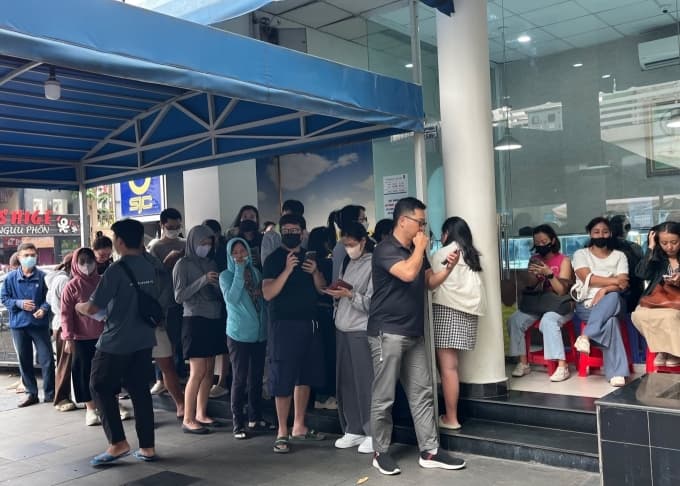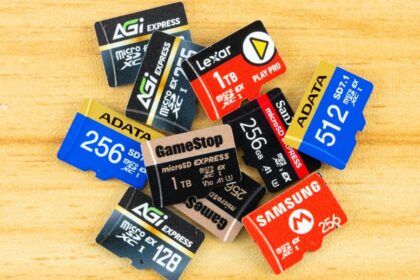A market opening meets a rush for gold
Vietnam’s decision to end its state monopoly on gold bars drew thousands of buyers to shops nationwide on Friday, then record prices on Saturday. Lines formed in Ho Chi Minh City and Hanoi as consumers sought rings and bullion on the first day private producers were allowed, yet many left empty handed. Retailers rationed purchases and inventory thinned within hours. The State Bank of Vietnam is still processing licenses for new producers, leaving Saigon Jewelry Company, known as SJC, and a handful of large retailers to shoulder a sudden surge in demand.
Outside SJC’s headquarters in Ho Chi Minh City, queues stretched along the block. Staff limited each buyer to 0.3 tael to prevent hoarding. A tael equals 37.5 grams, or about 1.2 ounces. SJC also restricted gold bar sales to customers who had pre registered on its website, a crowd control step after days of heavy demand. Many buyers pivoted to simple rings when they could not secure a bar slot.
In Hanoi, Bao Tin Minh Chau on Tran Nhan Tong Street sold out of rings early and switched to fulfilling preorders placed days earlier. Nearby stores displayed out of stock signs for bars and rings, offered only jewelry, and declined to take new orders as they awaited clarity on fresh supplies.
An employee at the Bao Tin Minh Chau store said the morning rush cleared shelves faster than expected.
There were many buyers today, but supply could not meet demand.
Some buyers gave up after hours in line. Oanh, 62, said she favors physical gold over other assets as she tries to shield savings from market swings.
I prefer investing in gold. At my age it is hard to manage or take risks with other assets.
Hanh, a District 5 resident in Ho Chi Minh City, tried for two days to reserve a bar online without success. She turned to rings despite the quantity limit.
It is too hard to buy gold bars, so I decided to get plain rings instead, even with the quantity limit.
The rush came as prices spiked to records within 24 hours, a sign of safe haven buying colliding with tight supply during the transition.
What changed and why now
The government ended a 13 year system that concentrated gold bar production and imports at the State Bank of Vietnam and its designated producer, SJC. New rules under Decree 232 (effective October 10, 2025) open the bullion market to licensed enterprises and commercial banks that meet strict capital and compliance standards. Policymakers want to narrow the gap between Vietnamese prices and world benchmarks, reduce smuggling, modernize the market, and improve transparency while keeping regulatory control. The move follows years of large local premiums that encouraged informal trade and complicated consumer access. It also reflects persistent demand for gold as a store of value during periods of currency weakness.
The new framework keeps the state in a supervisory role. The central bank will license eligible participants, set import quotas tied to macroeconomic conditions, and require regular reporting. Transactions of 20 million dong or more per person per day must go through bank accounts. Licensed sellers must issue electronic invoices and declare quality standards. Imported raw gold must meet high purity standards, typically above 99.5 percent, before it can be used to produce bars or jewelry.
The new rulebook at a glance
- Licensing replaces the monopoly. Qualified enterprises and banks can produce, trade, import and export bullion, under central bank oversight.
- Capital thresholds are high. Enterprises need at least 1 trillion dong in charter capital. Banks need at least 50 trillion dong, plus a gold trading license and clean compliance records.
- Payments are formalized. Any purchase or sale at or above 20 million dong per person per day must be made via bank accounts, with electronic invoices and data reporting.
- Imports are controlled. The State Bank of Vietnam will allocate import quotas based on monetary policy goals and market conditions.
- Quality is standardized. Licensed producers must publish purity and quality standards and maintain detailed transaction records.
- Banks return with limits. Banks may produce or import bars if licensed, but they are barred from mobilizing or lending gold, a key safeguard against past risks.
Prices surge as supply struggles to catch up
Local prices raced higher as the market opened. By Saturday morning, SJC quoted a record 142.8 million dong per tael, about 5,421 dollars, marking an increase of nearly 70 percent since the start of the year. That leap follows an earlier run up in late August when prices first set new highs around 126 to 128 million dong per tael. The opening of the market is meant to expand supply and reduce premiums over world prices. In the short term, the transition created a squeeze as buyers outnumbered sellers and as new producers waited on licenses. Brand premia and uncertainty about near term supplies kept the spread wide.
Vietnam’s appetite for gold is deep. Industry estimates show the country imported about 55 tonnes of bars, jewelry and coins last year, making it a major market in Asia. Gold is a cultural store of value and a hedge when the dong weakens, which it has done at several points since the pandemic. Global bullion also rose steeply through late 2024 and into 2025, lifting domestic prices further. When local supply lags demand, the price gap with world markets can widen, encouraging informal trade. The new regime aims to meet demand through legal channels and to shrink that gap over time.
How the new licensing regime will work
The State Bank of Vietnam is still processing applications. Officials have not yet announced which new enterprises will produce bars, and some retailers say they are waiting on guidance before making fresh commitments. A temporary mismatch between demand and supply is likely as the market shifts from a single producer to multiple licensed players. Shops are rationing sales, prioritizing preorders, and directing customers to rings or jewelry while they await bar deliveries from approved producers and banks.
Who can participate
- Enterprises must hold a gold trading license, have no unresolved sanctions, and maintain a minimum 1 trillion dong in charter capital.
- Commercial banks need a gold trading license, a clean compliance record, and at least 50 trillion dong in charter capital.
- Qualified entities may import raw gold, produce bullion, trade bars, and, where allowed, develop account based gold products.
- Large jewelers such as PNJ and DOJI, alongside SJC, are seen as early candidates for production licenses once cleared.
- Major banks that meet capital requirements include Vietcombank, BIDV, VietinBank, Agribank, VPBank, Techcombank, MB and ACB.
- The central bank will announce production licenses and import quotas, and will require electronic invoicing and data sharing.
Controls that stay in place
Banks are allowed back into bullion manufacturing and imports, but they remain prohibited from mobilizing gold deposits or extending gold loans. That limit addresses a key risk from the past, when volatility left institutions exposed. Imports will be paced by quotas, and all large transactions must move through the banking system. The design seeks to expand legal supply while curbing speculation and reducing the incentives for smuggling.
Dr. Nguyen Tri Hieu, a banking and financial expert, said the change can stabilize the market if supply increases and risk controls hold.
Allowing select banks and large gold enterprises to import gold will help stabilize the domestic market and reduce speculation. The price gap between domestic and international gold could narrow if the government boosts supply. When the local market is aligned with the global market, price disparities will decrease.
A representative of the Vietnam Gold Business Association said stronger oversight and the profile of licensed participants should support discipline.
There is no longer concern about banks breaking the rules.
The regulatory approach opens the door to competition while keeping the state in charge of safety rails. Success depends on how quickly licenses are granted, how much raw gold is imported, and how the market adapts to stricter reporting and payment rules.
What it means for consumers and retailers
Consumers will face a different buying experience. Multiple brands will compete for sales, payment for larger transactions will shift from cash to bank transfer, and electronic invoices will become standard. Shoppers will be able to compare prices and premia across brands rather than rely on a single label. Over time, transparent imports and more producers should ease shortages and narrow the spread with world prices, although the first weeks may remain volatile.
How to navigate the transition
- Compare brand prices before purchasing. Ask for the per tael premium to the global price and check the buyback spread.
- Confirm purity and hallmark standards. Bars and rings should carry clear markings and certificates.
- Prepare for electronic payments. Transactions of 20 million dong or more per person per day require bank transfers.
- Keep electronic invoices. They are proof of ownership and help with resale or warranty claims.
- Expect rationing at busy shops. Preorders and quantity limits are likely as new producers ramp up.
- Monitor official updates on licensed producers and import quotas to gauge supply momentum.
Retailers face a period of adjustment. Inventory planning will depend on how quickly licenses are issued and how import quotas are set. Competition among brands may compress margins, but better access to raw gold can help jewelers reduce costs over time. The Ministry of Finance has proposed cutting the 1 percent export tax on gold jewelry to zero to ease pressure on manufacturers facing high input costs. Jewelry makers have long cited a lack of raw gold import licenses for production, and better access could revive exports once domestic supply stabilizes.
Digital records and bank based payments will help reduce counterfeit risk and improve traceability. That should support confidence in new brands and give consumers more comfort when comparing products.
The role of culture, currency and the shadow market
Gold is woven into Vietnam’s financial habits and family traditions. People buy gold for weddings, festivals and savings. When the dong weakens or bank deposit rates fall, demand for gold tends to jump. In the past, authorities tried to reduce gold’s pull on day to day finance by centralizing control. The new approach accepts that demand will remain strong, and focuses on meeting it through regulated channels while protecting the financial system.
Large local premiums have long encouraged smuggling and informal trade. The new framework aims to pull transactions into the banking system through mandatory transfers and electronic invoices, shrinking the space for unreported deals. Over time, the market could add account based gold, better authentication tools, and even a national platform for price discovery. That would help compress brand premia, improve liquidity, and reduce volatility during busy seasons.
What to watch in the next few weeks
The single most important signal will be the first list of licensed bullion producers and the initial round of import quotas. That will show how much raw gold can enter the country and how quickly new bars can reach store counters. Watch whether retailers ease rationing, whether rings and bars come back into stock for walk in purchases, and whether queues shorten at large urban shops.
Prices will be another barometer. A narrowing spread between domestic and international prices would suggest that legal supply is catching up with demand. If the premium stays wide, that could reflect delays in licensing or conservative quotas. Consumers will also be adapting to bank transfers and digital invoices. Shops may tweak online pre registration systems to cut wait times and reduce in store crowds.
The Bottom Line
- Vietnam ended a 13 year monopoly on gold bars, opening production and imports to licensed enterprises and banks.
- A demand surge met thin supply on day one, with queues, rationing and widespread out of stock notices.
- SJC limited buyers to 0.3 tael and restricted bar sales to pre registered customers to manage crowds.
- Prices hit a record 142.8 million dong per tael, roughly 5,421 dollars, after another rush of safe haven buying.
- The new regime keeps tight oversight, including capital thresholds, import quotas and electronic invoicing.
- Transactions of 20 million dong or more per person per day must go through bank accounts.
- Banks are allowed back into bullion production and imports, but cannot mobilize or lend gold.
- Authorities aim to shrink the premium to world prices, reduce smuggling and expand legal supply.
- Licensing announcements and the first import quotas will set the pace for how quickly shortages ease.
- Consumers should compare brand prices, prepare for bank transfers, and keep electronic invoices during the transition.












